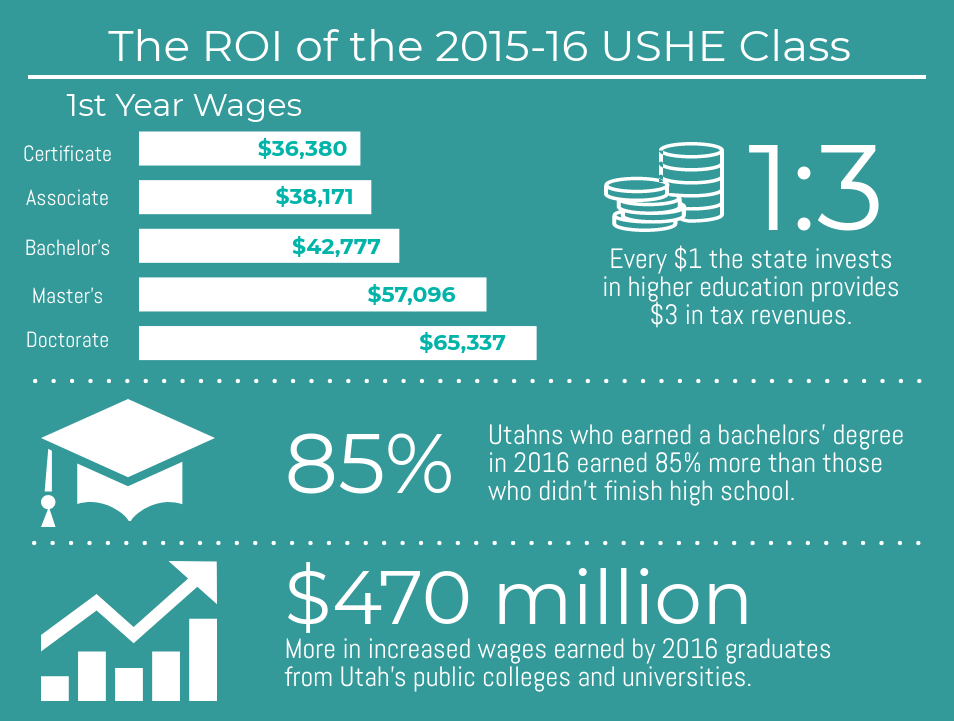New analysis estimates individual and state benefits of a college education in Utah.
For every tax dollar the state invests in higher education, there is a 3 dollar increase in tax revenues to the state. Further, a Utahn who invests a year’s worth of tuition in a college education will realize at least a 41% wage increase in the first year working after college. This is the result of a new new analysis of 2016 graduates from Utah’s public colleges and universities, in partnership with the Utah Department of Workforce Services.
Over the most recent decades, state investment in higher education has slowed, and even decreased, due to a variety of pressures on state coffers. And while that disinvestment has been the primary driver for significant increased costs to students (via tuition increases), the monetary return of a college education still prevails.
The full analysis documents the methodology and assumptions used to reach these findings. While significant assumptions must be made with such a large universe and limited wage information, it is clear a college education benefits the individual as well as the state as a whole.
A summary of the findings:
- For every $1 the state invests in public higher education, it sees a return of $3 in increased tax revenues.
- Students who earned a one-year certificate in 2016 saw their tuition investment of $3,568 (SLCC) increase their wage return by 42%, or $6,000 in one year.
- The 24,472 students who graduated from Utah’s public colleges and universities in 2016 collectively earned an estimated $470 million more in increased wages in their first year of employment after graduation.
- Individuals who earned a bachelor’s degree (almost half of all 2016 graduates) earned 85% more than those who didn’t finish high school.
- After 5 years, wages for those with a bachelor’s degree will further increase an estimated 46% above their 1st year earnings.
This analysis provides a more granular analysis using Utah data that supports similar findings published by the College Board a year ago. However, the challenge remains: higher tuition means larger barriers to college for many students and has caused many to question the value and impact of a college education. Lack of access to college limits the ability of states in meeting educational goals, which in turn stymies the state’s economic growth goals. If there was an increased investment by states in post-secondary education, improvements in both access and completion will help them see a measurable return on the investment in education.


